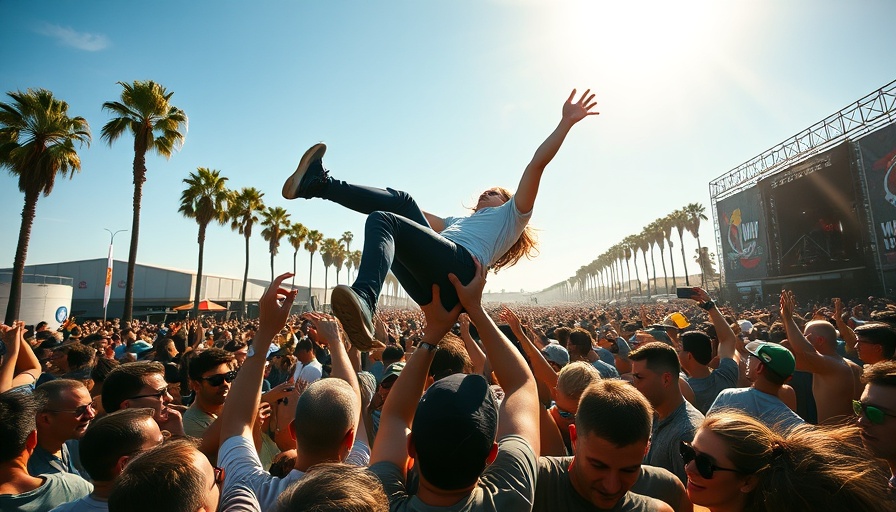
The Economic Impact of Large Events in Long Beach
The recent Vans Warped Tour in Long Beach was a transformative event that showcased the city’s capability to host massive crowds, rejuvenating the local economy in the process. With Mayor Rex Richardson emphasizing the festival as a pivotal moment in Long Beach’s entertainment history, it opens the discussion on the broader implications such festivals have for local businesses and residents alike.
Surge in Business: Who Truly Benefits?
For local restaurants and businesses, major events like the Warped Tour can provide a much-needed sales boon. Orsa Modica, owner of Modica’s Deli, reported a 25% increase in sales, attributing this uplift to the influx of festival-goers. Her experience highlights a significant trend where local establishments can thrive when large crowds visit the city—if their logistics and marketing align effectively. However, the downside remains: restrictions on re-entry and late schedule announcements created logistical challenges for some dining establishments, preventing them from capitalizing on the constant flow of potential customers.
Community Reactions: The Mixed Bag of Crowds
While many revel in the excitement and energy that large crowds bring, others, like Long Beach resident Jim Goodin, face challenges. Living adjacent to the festival, Goodin reported sound levels exceeding city ordinances, illustrating the tightrope walk between celebration and community disruption. His experience emphasizes that successful event planning must consider local residents’ quality of life as well. The question arises—how can cities balance these events' economic benefits with their residents' comfort and peace?
Building for the Future: Long Beach’s Entertainment Ambitions
The city is laying the groundwork for further success with ongoing projects, such as the planned Long Beach Bowl amphitheater. Slated to open in April 2026, this amphitheater aims to boost the year-round tourism appeal of Long Beach. With substantial visitor spending—recorded at a $1.9 billion economic impact in 2023—city officials are optimistic that such investments will draw even more crowds, energizing the local economy.
The Broader Context of Festivals in Southern California
Long Beach is not alone in its quest to become a music and entertainment hub. Other Southern California cities also vie for a slice of this lucrative market. Festivals are often used as economic catalysts, bringing tourists and increasing revenue for local businesses. This trend indicates a shift in how cities view massive public gatherings. They are increasingly viewed not just as local experiences but as potential economic boons striving for growth amidst changing economic landscapes.
Future Predictions for Public Gatherings in Urban Areas
Looking ahead, it's clear that cities like Long Beach must continue to innovate if they hope to capitalize on the benefits that large festivals can provide. Urban planners and community organizers must collaborate to create a sustainable model for hosting big events that benefits all parties involved. As Long Beach strives to reframe its identity away from oil dependency and looks to music and entertainment, it'll be essential to address both the cheers and the complaints that such vibrant public gatherings invariably ignite.
Conclusion: The Call for Cohesion and Inclusivity
Ultimately, events like the Warped Tour evidence both the potential and challenges that come with large-scale festivals. While yes, the economic uplift and communal excitement are undeniable, there must be an inclusive approach to manage the impact on local residents. Long Beach is on the cusp of a cultural transformation; for that transformation to be successful, a sustained dialogue between the city officials, local businesses, and residents is essential.
 Add Row
Add Row  Add
Add 



Write A Comment